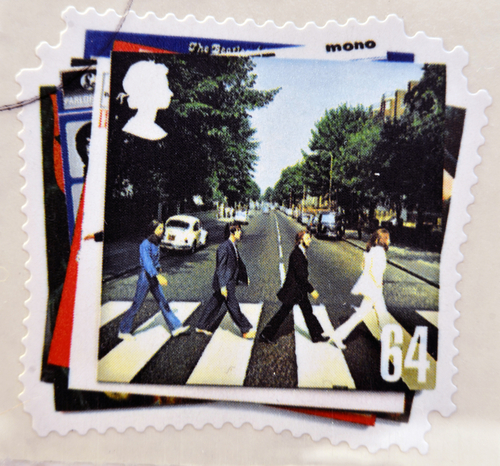
Teaching the History of Rock Music Using Reverse Chronology

A few music teachers will have the opportunity to teach survey courses about music history. Some will present broad a curriculum encompassing the whole of Western music, while others will focus on 20th Century popular music. The closer the content gets to the present, the more relatable and engaging it will be for students. Music teachers who teach contemporary music have a pristine opportunity to use an intriguing but challenging model of history instruction: reverse chronology.
History teachers have experimented with reverse chronology for several decades. By starting with current events, students are hooked by content that should be more relatable than abstract moments from distant history. An inquiry model often is used in which students pose questions about the causes of events and then research these causes. This inquiry can be chained almost indefinitely and can lead to discoveries unique to each student.
The model has clear advantages. It encourages and fosters research skills. It closely resembles how today’s learners sift through digital archives to find the specific information they need. It circumvents the age-old problem in history of never having enough time to cover anything more recent than World War I. If nothing else, the novelty of it is attractive to students.
Some disadvantages should be apparent, though. To begin, many administrators simply won’t allow it. The model strays too far from most history curricula to be acceptable. Students do risk missing large swaths of content that could be more thoroughly covered by a traditionally chronological survey. Having the students do so much research independently poses an additional risk in that they might find highly biased or inaccurate sources. Telling a story in order might better fill certain cause and effect gaps. Managing all of this can be a challenge for the teacher.
Reverse chronology might work best in an art or music course. Cause and effect relationships aren’t as concrete between creative movements as they are between historical events. Student interpretations would be more acceptable than in examinations of political or social movements. Furthermore, administrators might not bother to strictly oversee how the content is arranged in these courses. Working backwards through music history might be even more likely to engage students than doing the same with American history might be.
Beginning would be simple enough. Students could work from a list of contemporary musicians, bands, and singers, or they could generate such a list on their own. Examining each artist, they could research biographical information through available interviews or fan pages about direct influences. As students compile a new list of artists who have influenced those on the original list, a second round would commence. Influences could skip generations of music, thus leaving some voids. However, a few rounds of this form of inquiry could set up a broader search.
The teacher could break a class into teams, each assigned a style of contemporary music (as an alternative, each team could be given several styles). The task for each team would be to dissect the style and examine what other styles have influenced it or have led to its proliferation. This would involve some reading, but listening should be part of the search. The students should hear the motifs that newer music has inherited from older music. The hope is that students would find recognizable strands and trace these from one era to another.
This form of inquiry is open enough that students might struggle to know where to start. Searches for specific artists might need to include guidelines for particular information to gather. The same might be needed for searches built around entire styles of music. Questions could be written to lead students to certain discoveries. An example might be “What late 70’s rock bands most influenced Metallica’s early sound?” More critical questions could be used, such as “Who more directly influenced Nirvana: the Pixies or Black Flag?” Similar guiding questions could be made for any artist or style of music. Tracing any style of music back to its origins will lead to natural questions about how those origins came to be, so the inquiry doesn’t ever have to have a clear end.
Other methods of reverse chronological instruction also could work. The teacher might examine contemporary music by comparing decades or by examining one decade worth of music at a time. Inquiries could become detailed projects, allowing for deeper investigation and a method of assessment. Cross-curricular connections would make sense, as the music of a given era will reflect historical, social, and technological events of that era. The model can be as complex as a group of students can handle.
Reverse chronology might not work for all surveys of history. It has potential to work well with any survey of music history. Many young people might not think on their own to explore the sources of the music they like. Using reverse chronology can pique their interests and take them on a tour of music they might not otherwise have discovered. Such a voyage should be the point of a rich education.
Written by Jeff Hartman



